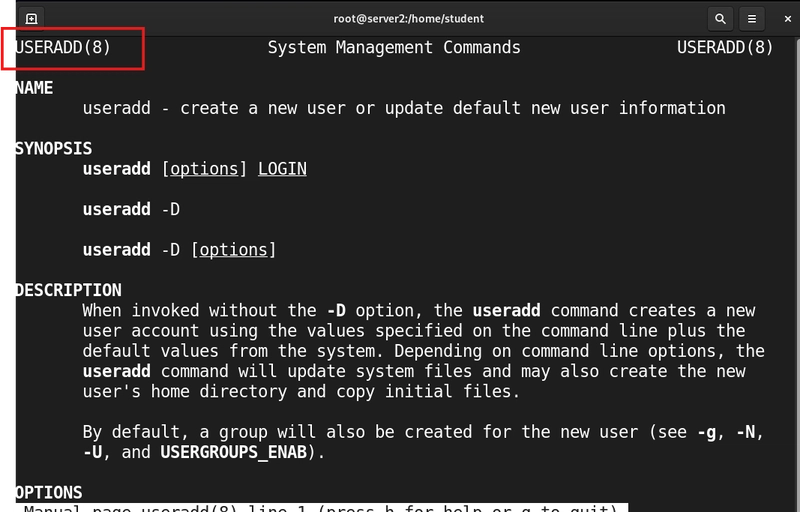User Management in Linux: A Beginner's Guide to Creating, Modifying, and Deleting Users
Table of Contents What is a User in Linux? Types of Users UID: Unique User ID Explained Where User Data is Stored Essential User Management Commands Create a New User Set or Change a Password Check User Properties Switch Between Users Delete a User Add a Group Tips Managing users is a core skill for anyone working with Linux — whether you're running a local server or managing cloud infrastructure. In this guide, I break down the basics of Linux user accounts, from types and UIDs to creating, modifying, and deleting users. What is a User in Linux? A user is a login account on a Linux system that allows a person (or system process) to access the computer's resources. Each user has permissions that control what they can or can't do. Types of Users System User Created automatically during OS installation Typically used for running services and system processes Examples: root, apache, daemon Normal User Created manually by an administrator Used for human users to log in and run applications Example: john, developer1 UID: Unique User ID Explained Every user in Linux is assigned a UID (User Identifier) UID Range Description 0 Reserved for the root (superuser) 1–999 Reserved for system/service users 1000–60000 Normal user accounts Where User Data is Stored File Purpose /etc/passwd Stores user account info /etc/shadow Stores user password and aging info Essential User Management Commands Create a New User useradd james - Creates a new user account Set or Change a Password passwd james - Assigns or updates the password for a user. You will be prompted to enter the password twice. Check User Properties grep james /etc/passwd - Displays account details. Check Password Properties grep james /etc/shadow - View password aging and security info for a user. Switch Between Users su james - Switches from the current user Modify an Existing User usermod -l newname oldname - Changes a username from oldname to newname. usermod -l james daniel Delete a User userdel james - Delete user only userdel -r james - Delete user and their home directory Add a Group groupadd itdepartment - Create a group Add User to a Group usermod -aG groupname username - Adds a user to a supplementary group. usermod -aG itdepartment james List All Groups a User Belong to groups username groups james Tips Use man or info on the command - These give detailed documentation right in the terminal. It’s like built-in help. Managing users is an important part of working with Linux. Whether you’re adding new people to the system, setting up accounts for services, or removing old users, these commands make it easy to do the job with confidence.

Table of Contents
- What is a User in Linux?
- Types of Users
- UID: Unique User ID Explained
- Where User Data is Stored
-
Essential User Management Commands
- Create a New User
- Set or Change a Password
- Check User Properties
- Switch Between Users
- Delete a User
- Add a Group
- Tips
Managing users is a core skill for anyone working with Linux — whether you're running a local server or managing cloud infrastructure. In this guide, I break down the basics of Linux user accounts, from types and UIDs to creating, modifying, and deleting users.
What is a User in Linux?
A user is a login account on a Linux system that allows a person (or system process) to access the computer's resources. Each user has permissions that control what they can or can't do.
Types of Users
System User
- Created automatically during OS installation
- Typically used for running services and system processes
- Examples:
root,apache,daemon
Normal User
- Created manually by an administrator
- Used for human users to log in and run applications
- Example:
john,developer1
UID: Unique User ID Explained
Every user in Linux is assigned a UID (User Identifier)
| UID Range | Description |
|---|---|
| 0 | Reserved for the root (superuser) |
| 1–999 | Reserved for system/service users |
| 1000–60000 | Normal user accounts |
Where User Data is Stored
| File | Purpose |
|---|---|
/etc/passwd |
Stores user account info |
/etc/shadow |
Stores user password and aging info |
Essential User Management Commands
Create a New User
useradd james - Creates a new user account
Set or Change a Password
passwd james - Assigns or updates the password for a user.
You will be prompted to enter the password twice.

Check User Properties
grep james /etc/passwd - Displays account details.

Check Password Properties
grep james /etc/shadow - View password aging and security info for a user.

Switch Between Users
su james - Switches from the current user

Modify an Existing User
usermod -l newname oldname - Changes a username from oldname to newname.
usermod -l james daniel
Delete a User
userdel james - Delete user only

userdel -r james - Delete user and their home directory
Add a Group
groupadd itdepartment - Create a group

Add User to a Group
usermod -aG groupname username - Adds a user to a supplementary group.
usermod -aG itdepartment james
List All Groups a User Belong to
groups username
groups james

Tips
Use man or info on the command - These give detailed documentation right in the terminal. It’s like built-in help.

Managing users is an important part of working with Linux. Whether you’re adding new people to the system, setting up accounts for services, or removing old users, these commands make it easy to do the job with confidence.









































































































































































![[The AI Show Episode 144]: ChatGPT’s New Memory, Shopify CEO’s Leaked “AI First” Memo, Google Cloud Next Releases, o3 and o4-mini Coming Soon & Llama 4’s Rocky Launch](https://www.marketingaiinstitute.com/hubfs/ep%20144%20cover.png)




























































































































![[DEALS] The All-in-One Microsoft Office Pro 2019 for Windows: Lifetime License + Windows 11 Pro Bundle (89% off) & Other Deals Up To 98% Off](https://www.javacodegeeks.com/wp-content/uploads/2012/12/jcg-logo.jpg)



























![Is this too much for a modular monolith system? [closed]](https://i.sstatic.net/pYL1nsfg.png)






















































































































_Andreas_Prott_Alamy.jpg?width=1280&auto=webp&quality=80&disable=upscale#)
































































































![What features do you get with Gemini Advanced? [April 2025]](https://i0.wp.com/9to5google.com/wp-content/uploads/sites/4/2024/02/gemini-advanced-cover.jpg?resize=1200%2C628&quality=82&strip=all&ssl=1)













![Apple Shares Official Trailer for 'Long Way Home' Starring Ewan McGregor and Charley Boorman [Video]](https://www.iclarified.com/images/news/97069/97069/97069-640.jpg)
![Apple Watch Series 10 Back On Sale for $299! [Lowest Price Ever]](https://www.iclarified.com/images/news/96657/96657/96657-640.jpg)
![EU Postpones Apple App Store Fines Amid Tariff Negotiations [Report]](https://www.iclarified.com/images/news/97068/97068/97068-640.jpg)
![Apple Slips to Fifth in China's Smartphone Market with 9% Decline [Report]](https://www.iclarified.com/images/news/97065/97065/97065-640.jpg)





































































































































